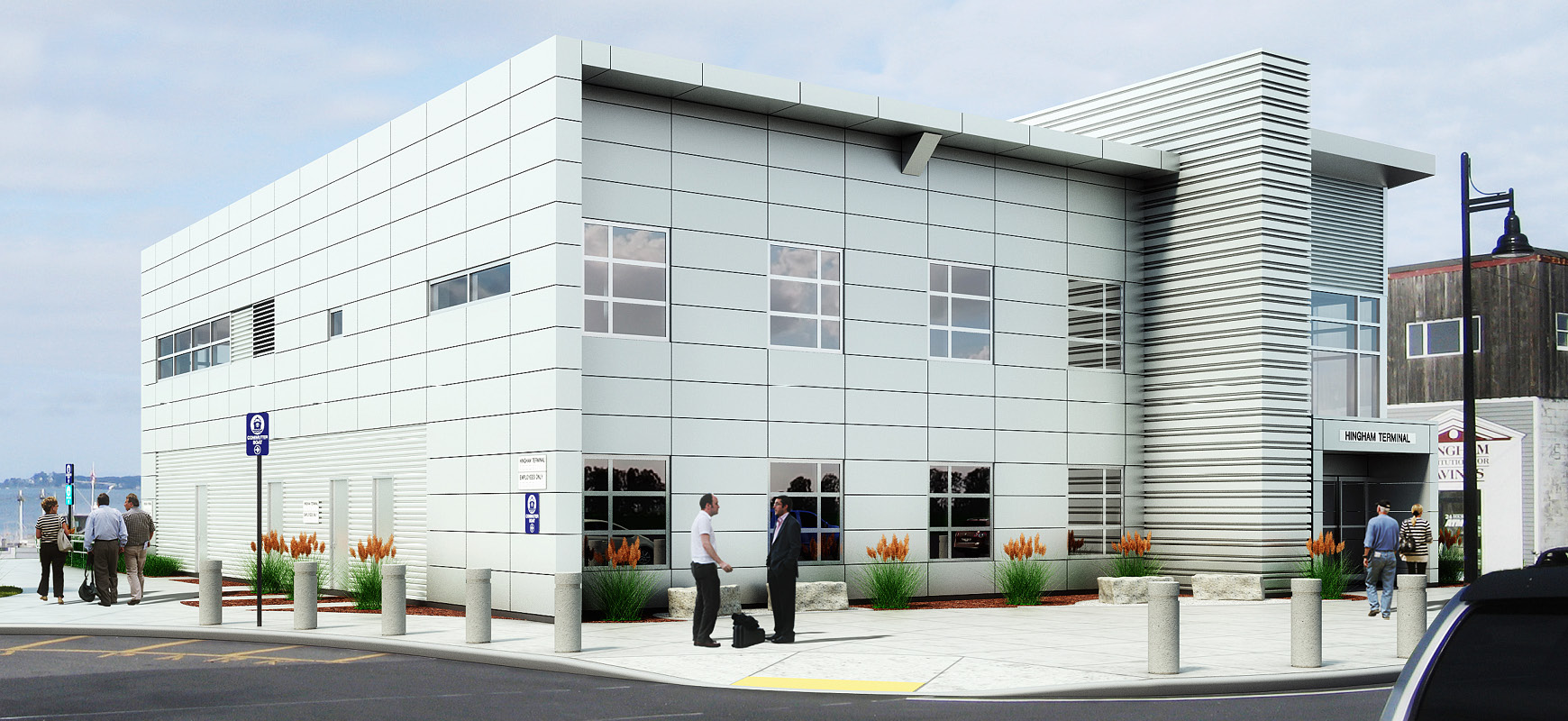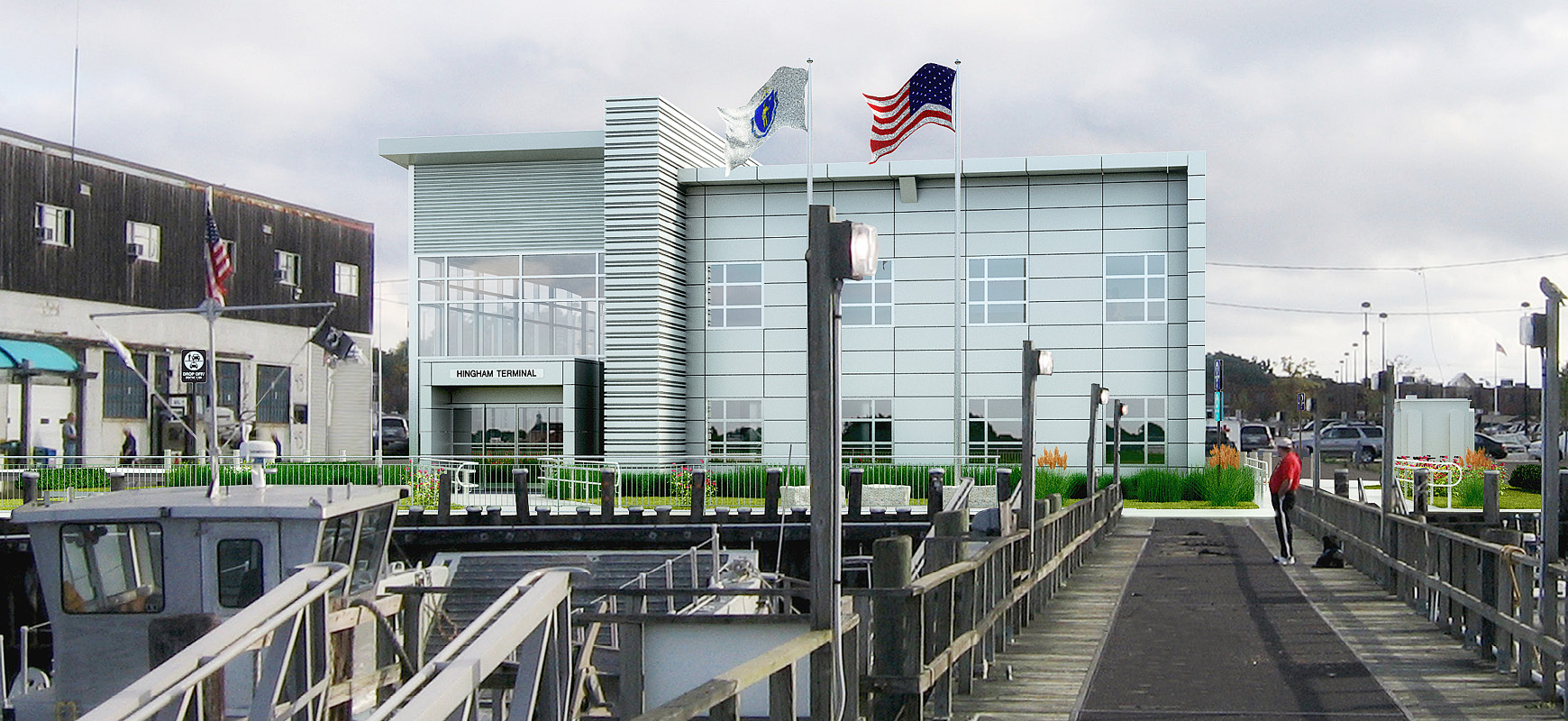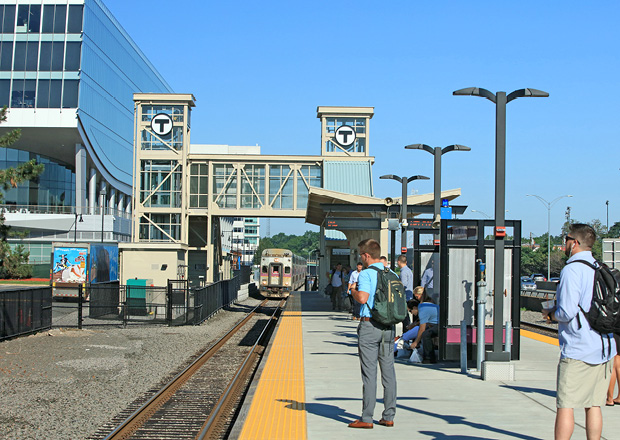BOSTON, MA – For the first time since regular ferry service was launched more than 40 years ago, the nearly 5,000 daily commuters who use the cross-harbor service from Boston’s south shore in Hingham have a modern, environmentally sustainable shelter to protect them from the elements thanks to STV. The firm, a leading provider of design and construction management services for transportation infrastructure and facilities, provided architectural and engineering design services for the two-story facility.
The new, $7 million, 8,400-square-foot Hingham Intermodal Center at Hewitt’s Cove, marks a new era for Massachusetts Bay Transportation Authority (MBTA) commuters who take the 35-minute trip to Rowes Wharf in downtown Boston and connecting service to Logan International Airport and Hull. The new building also provides seamless access to bus service to Hingham Center and other destinations, making it a transit-oriented development and reducing the need for unnecessary car trips.
“Water transportation has proven to be very popular with commuters, and the MBTA is pleased to offer improvements that make the service even more desirable,” said acting MBTA general manager Brian Shortsleeve. “With its state-of-the-art sustainability features, the Hingham Intermodal Terminal is the most energy-efficient transit facility in the MBTA system.”

The building features a waiting area with floor-to-ceiling windows providing ample lighting and views to incoming and outgoing boats and buses. Along with a ticket counter to serve commuters, the building also houses office space for the Hingham harbormaster, the Massachusetts Environmental Police, and Boston Harbor Cruises, which operates the ferry service on behalf of the MBTA. The building is owned by the Massachusetts Department of Conservation and Recreation and is operated by the MBTA under a 99-year lease agreement.
“We think the Hingham Intermodal Center is an enormous benefit to the community of Hingham and the region,” said Hingham town administrator Ted Alexiades. “It identifies the shipyard as a smart growth destination and it gives us access to the waterways in a much more enhanced way than we ever had. Architecturally, the facility is stunning and was very smartly designed by incorporating and preserving the beautiful views of the water.”
The terminal is built on the site of a World War II-era shipyard and boasts a number of sustainable design features that meet the highest standards of energy efficiency and reduce its environmental impact. It includes a green roof with native plants to insulate and filter storm-water runoff; a geothermal heating and cooling system; and an advanced lighting control system. The facility also uses recycled and renewable materials as part of the building’s indoor and exterior finishes. Lowflow faucets and toilets increase the building’s water efficiency. During construction, STV developed an indoor air quality plan to prevent dust from contaminating ventilation equipment and eliminating the use of paints with volatile organic compounds.
“This building is designed to meet extremely high sustainability and energy efficiency standards that will produce significant cost savings over its lifespan,” said STV project manager Kristine Gorman. “Beyond its aesthetic and energy saving value, the green roof will be far more durable than a traditional finished roof, extending its life from 25 to 40-plus years.”
The terminal will be dedicated to Herbert L. Foss, a Spanish-American War veteran who lived in Hingham for many years. A dedication plaque and a bust of Seaman Foss will be featured in the lobby.







